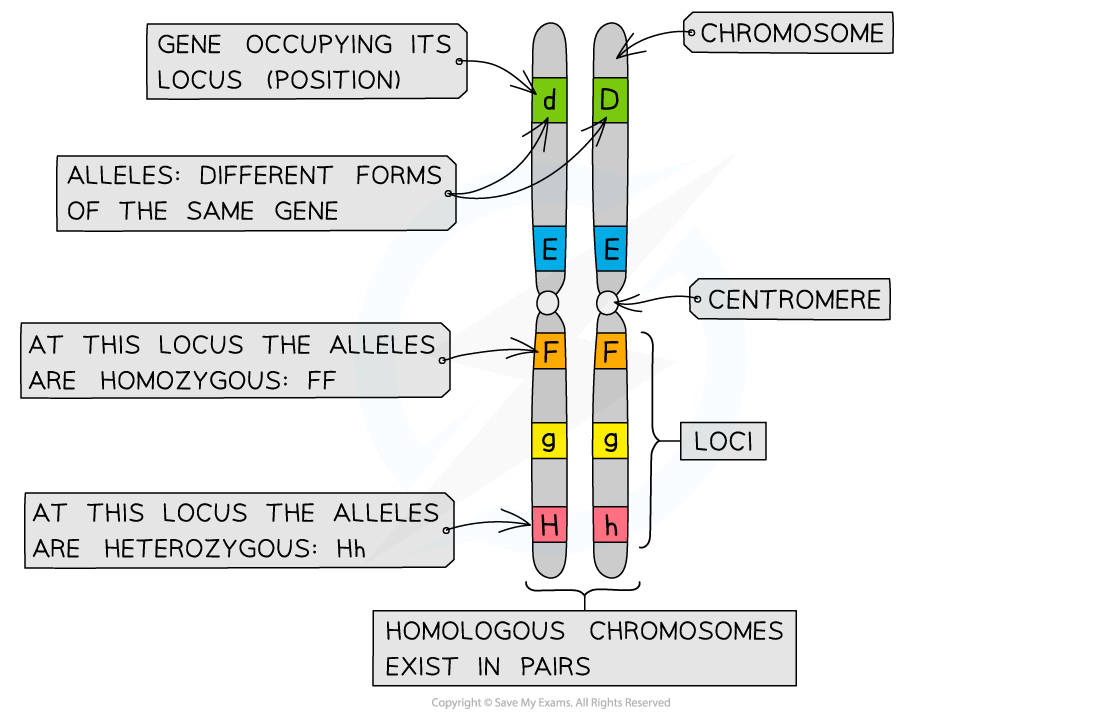Alleles
- A gene codes for a specific polypeptide that can affect a specific trait or characteristic in an organism
- Eg. blood type
- Alternative forms of a gene can exist, these various specific forms are called alleles
- Note that although alleles are different forms of the same gene, they all still occupy the same locus on the chromosome
- New alleles occur through mutations
- Multiple alleles can exist for a gene that determines a specific trait
- Each allele results in a different variation of that trait
- Eg. blood types A, B, AB and O
- Each allele results in a different variation of that trait
- As a result, a cell possesses two alleles of every gene within its nucleus
- When the two alleles at a locus are the same/identical they are described as homozygous
- When the two alleles at a locus are different they are described as heterozygous

Chromosomes showing genes, loci and alleles
Differences between Alleles
- Alleles differ from each other by one or only a few bases
- Even a very small change in base sequence can bring about a large effect in gene function, with a large knock-on effect on the phenotype
- Even though different alleles of a gene have slightly different base sequences, they still occupy the same locus on the chromosome
- Since the Human Genome Project, sophisticated techniques can analyse different alleles
- These techniques are becoming faster, more accurate and more accessible to individuals
- Comparable sequences can be analysed down to individual bases to determine evolutionary relationships
- The more differences in base sequence, the further apart two species are in evolutionary terms
- The exact positions where bases differ between alleles are called SNPs or snips (Single Nucleotide Polymorphisms)
- An allele can have several snips but still only differ by a few bases from its other allele
Exam Tip
Use the term allele wherever possible in written answers, as it's always a more precise term than gene.
